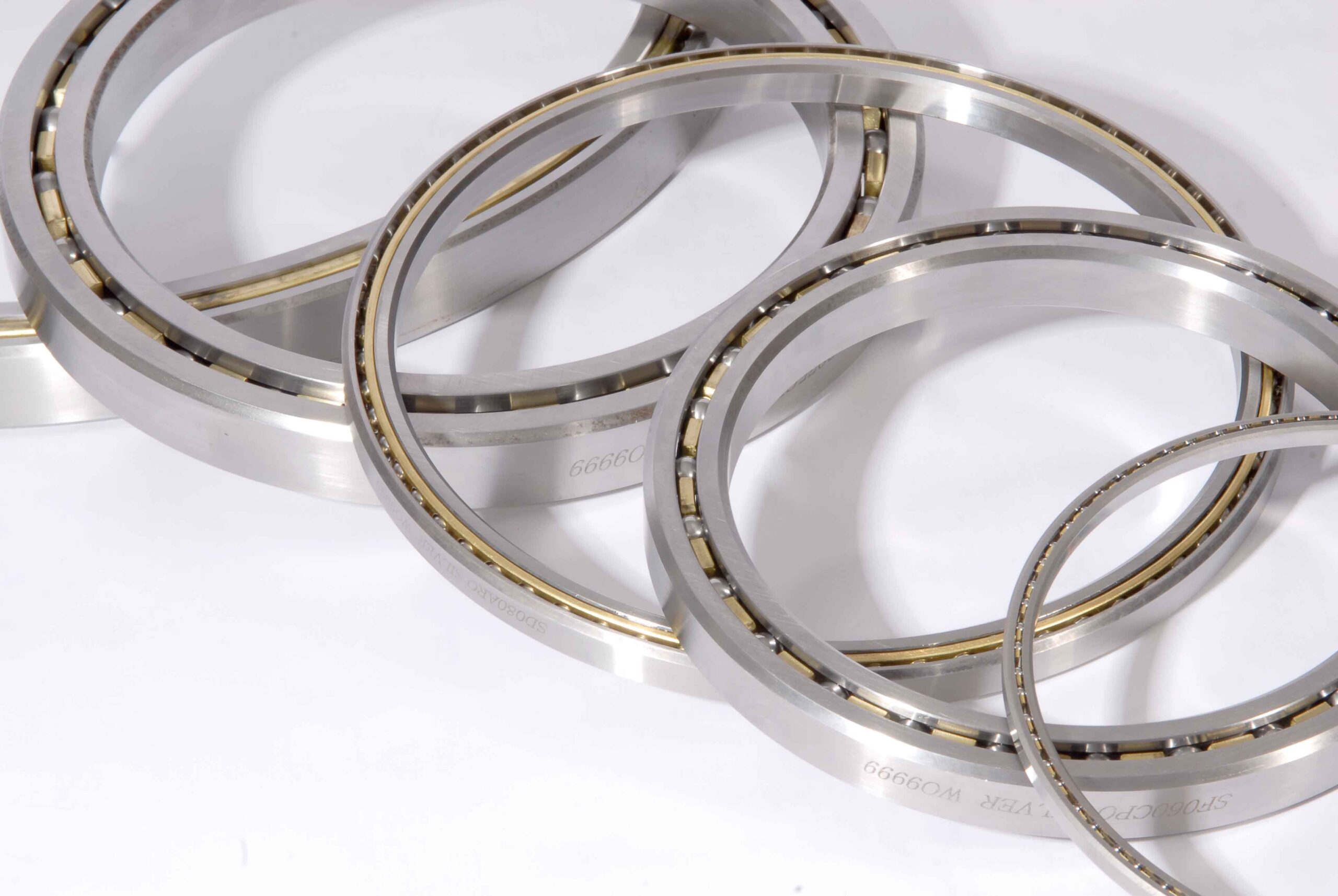Capacities and Static Safety Factor Calculations – Published Capacity Approach
Dynamic Capacities
Published Dynamic Capacities are defined as the radial load that when applied to any group of similar bearings will yield one million revolutions of fatigue life for 90% of those bearings. It is important to note that the Dynamic Capacities are not a limitation for applied loads in any manner, but rather should be used solely to estimate expected life of the bearing. They are usually associated with bearings under rotation. For most radial ball bearings these capacities refer only to an Equivalent Radial Load. For Silverthin Thin Section Ball Bearings, all Type-C bearings show only radial capacities. Type-A and Type-X also show thrust capacities. Duplex Type-A and Type-X also show moment capacities. These non-radial capacities are merely a recommendation of loading conditions not to exceed.
Dynamic Life – Analytical Approach (ISO 16281:2008)
This analytical approach to determining dynamic bearing life looks at the actual contact stress between the rolling elements and the raceways, and considers actual internal geometries which are incorrectly assumed in the Published Capacity Approach. It also considers combined loading conditions (radial, axial, moment), bearing internal fit (clearance or preload), lubrication and lubricant cleanliness, mating components, all materials, temperatures, etc). This methodology will also better determine the Static Safety Factor for the bearings (discussed below) This is a more accurate approach than the Published Capacity Approach noted above. For the Analytical approach, nomenclature for Life is expressed as L10r (millions of revolutions) or L10rh (hours).
Dynamic Life – Published Capacity Approach
The calculation is performed using the following formulas:
L10=(C/P)3
L10 = Millions of revolutions
C = Silverthin Dynamic Radial Capacity
P = Equivalent Radial Load (Effective)
Or, expressed in hours as:
L10h=(16667/n)*(C/P)3
L10h = Expected Life in Hours
n = Rotational Speed in RPM
For cases with multiple loading conditions (radial, thrust, moment), please consult Silverthin Engineering for additional analysis.
Static Capacities
Published Static Capacities are defined as “The radial load that when applied to any bearing will yield a permanent deformation (dent) equivalent to 0.0001 of the diameter of the rolling element”. They are usually associated with bearing not rotating, rotating slowly, or making small, intermittent motions. In this case the other capacities mentioned in the section above (thrust and moment) will yield the same contact stress as the definition for static capacity above.
Static Capacity and Static Safety Factor
Analytical Approach (ISO 16281:2008)
This analytical approach to determining the Static Safety Factor looks at the actual contact stress between the rolling elements and the raceways and considers actual internal geometries which are incorrectly assumed in the Published Capacity Approach. It also considers all loading conditions (radial, axial, moment), bearing internal fit (clearance or preload), mating components, all materials, temperatures, etc.). Lubricant and lubricant cleanliness are not considered for this calculation. This is a more accurate approach than the Published Capacity Approach noted above. For the Analytical approach, nomenclature for the Static Safety Factor is expressed as SF.
For detailed analysis using this method, please contact Silverthin Engineering for assistance.
Static Capacity and Static Safety Factor
Published Capacity Approach
The calculation is performed using the following formulas:
S0=(C0/P0)
S0 = Static Safety Factor
C0 = Silverthin Static Capacity
P0 = Equivalent Static Load (Effective)
For cases with multiple loading conditions (radial, thrust, moment), please consult Silverthin Engineering for additional analysis.

